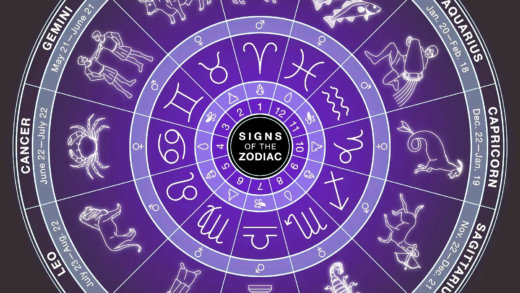Opening lines in literature play a crucial role in engaging readers and setting the tone for the narrative. Memorable openings spark curiosity, evoke emotions, and create lasting impressions. Techniques for crafting effective opening lines include clarity, strong vocabulary, and intentional tone. Iconic lines resonate due to their universal themes and emotional depth, leaving a legacy that endures through generations.
Iconic Opening Lines: What Makes an Opening Line Memorable?
Opening lines are significant in books as they set the stage for the entire narrative. The significance of opening lines in books lies in their ability to capture attention instantly. A memorable opening line often contains unique phrasing, unexpected twists, or a strong emotional hook. For example, consider the famous line from “Moby Dick”: “Call me Ishmael.” This simple yet intriguing sentence invites curiosity and establishes a personal connection with the reader.
To create iconic opening lines, authors employ various techniques:
- Vivid imagery: Descriptive language can paint a picture that draws readers in.
- Intriguing questions: Posing a question can engage readers’ minds and make them ponder.
- Bold statements: Starting with a strong assertion can create a sense of urgency.
- Unique character introductions: Introducing a captivating character from the get-go can hook the audience.
In summary, iconic opening lines resonate because they evoke curiosity and establish a tone that carries throughout the narrative. Their emotional impact can linger long after the book is closed, making them unforgettable.
The Emotional Hook: How Opening Lines Evoke Feelings
The emotional impact of opening lines is profound. These lines can trigger a range of feelings, from joy to sorrow, excitement to dread. An effective opening line taps into human emotions, creating an immediate bond between the reader and the text. For instance, the opening of “1984” by George Orwell—”It was a bright cold day in April, and the clocks were striking thirteen”—evokes a sense of unease and curiosity right away.
Several techniques help achieve this emotional connection:
- Universal themes: Relating to common human experiences, such as love or loss, resonates with readers.
- Strong sensory details: Engaging the senses makes scenes feel real and relatable.
- Evocative language: Using powerful words can stir feelings effectively.
- Character emotions: Introducing a character’s emotional state can create empathy.
In conclusion, the emotional hook of an opening line is essential in drawing readers into the story. It sets the tone and prepares the reader for the journey ahead.
Identifying Books by First Sentences: Tips for Recognizing a Book from Its Opening
Recognizing a book by its opening line is a fun challenge for readers. The identifying books by first sentence technique relies on the distinctiveness of an author’s style or thematic focus. Here are some tips to help identify books based on their openings:
- Familiarity with styles: Knowing an author’s writing style can make it easier to pinpoint their works.
- Memorable phrases: Many opening lines become famous, making them easier to recall.
- Thematic clues: Themes introduced in the first line can lead to identifying the book.
- Contextual knowledge: Understanding the genre can provide hints about the book’s identity.
In essence, identifying books by their opening sentences is about recognizing patterns and styles. This skill not only enhances reading enjoyment but also deepens appreciation for literary craft.
Misleading Openings: Examples of Famous Books with Deceptive First Lines
Some opening lines can be misleading, leading readers down unexpected paths. These misleading opening lines in literature serve as a clever narrative device. A notable example is the opening of “A Tale of Two Cities” by Charles Dickens: “It was the best of times, it was the worst of times…” This line sets an expectation of duality, yet the story unfolds in a much darker tone.
Here are a few more examples of misleading openings:
- “The Catcher in the Rye”: The opening seems casual but reveals deep themes of alienation.
- “The Great Gatsby”: The lush descriptions in the beginning hide the tragic fate of its characters.
- “Pride and Prejudice”: The famous opening suggests a light romance but dives into complex social commentary.
Misleading openings challenge readers’ expectations and enhance the narrative complexity. They invite readers to reconsider their initial assumptions as the story progresses.
Author Styles: Different Approaches to Crafting Opening Lines
The significance of opening lines in books is often tied to the unique styles authors employ. Different authors have distinct voices, and their choices in crafting opening lines reflect their individual approaches. Here are some common styles:
- Minimalism: Authors like Hemingway favor brevity. Their opening lines are often straightforward yet impactful. For instance, Hemingway’s “In our time” sets a tone of reflection and simplicity.
- Descriptive Detail: Writers such as Gabriel García Márquez use rich imagery. His opening in “One Hundred Years of Solitude” immerses readers in a vivid world, drawing them into the narrative.
- Dialogue-Driven: Some authors start with dialogue to create immediacy. J.D. Salinger’s “The Catcher in the Rye” begins with a conversational tone, making readers feel like they’re part of the story.
- Philosophical Reflections: Authors like Albert Camus often begin with introspective statements. This style invites readers to ponder deeper themes right from the start.
Each author’s style not only showcases their voice but also sets expectations for the tone and direction of the story. Understanding these styles enhances appreciation for the craft of writing.
Setting the Tone: How the First Line Influences the Entire Book
The first line of a book plays a crucial role in establishing the overall tone of the narrative. The opening lines and book tone are intricately linked, as they lay the groundwork for what follows. A strong opening can evoke specific emotions and set a mood that resonates throughout the text. Here’s how:
- Establishing Atmosphere: A dark, brooding opening can signal a thriller or horror story, while a light, whimsical line may indicate a comedy.
- Character Insight: Introducing a character’s emotional state can foreshadow their journey. For instance, a line that reveals despair hints at a story of struggle.
- Foreshadowing Events: The first line can subtly hint at future plot developments, creating a sense of anticipation.
- Creating Expectations: A grandiose opening sets high stakes, while a mundane one may suggest a slice-of-life narrative.
In summary, the first line is not just an introduction; it’s a powerful tool that shapes the reader’s experience and expectations for the entire book.
Memorable Quotes: Notable Quotes from Opening Lines
Memorable opening lines often become quotes that resonate with readers long after they’ve closed the book. These lines encapsulate the essence of the story and remain etched in memory. Here are some iconic examples:
- “It was the best of times, it was the worst of times…” – Charles Dickens, A Tale of Two Cities
- “Call me Ishmael.” – Herman Melville, Moby Dick
- “All happy families are alike; each unhappy family is unhappy in its own way.” – Leo Tolstoy, Anna Karenina
- “It is a truth universally acknowledged, that a single man in possession of a good fortune, must be in want of a wife.” – Jane Austen, Pride and Prejudice
These quotes not only showcase the authors’ styles but also encapsulate the themes that follow. They remind us of the power of language and its ability to linger in our minds.
The Role of Curiosity: How Opening Lines Spark Interest
The significance of opening lines in books lies in their ability to capture curiosity right from the start. A well-crafted opening line can engage readers and make them eager to continue. It sets the stage, often posing questions or introducing intriguing scenarios that demand answers. For example, the first line of “The Hitchhiker’s Guide to the Galaxy” by Douglas Adams, “Don’t Panic,” immediately piques interest and invites readers into a whimsical adventure.
To effectively spark interest, authors often use several techniques:
- Surprising Statements: Starting with an unexpected claim can jolt readers awake.
- Engaging Characters: Introducing a quirky or relatable character can draw readers in.
- Setting a Mysterious Scene: Creating an enigmatic environment encourages readers to explore further.
- Provocative Questions: Asking a thought-provoking question challenges readers and makes them want to find out more.
In essence, opening lines are vital for sparking curiosity. They create a magnetic pull, ensuring that readers are eager to delve deeper into the narrative.
The Craft of Writing: Creating an Effective Opening Line
Writing an effective opening line requires skill and intention. The emotional impact of opening lines can significantly influence a reader’s experience. To craft an effective line, authors consider various elements that contribute to its success:
- Clarity and Brevity: An opening line should be concise and clear, avoiding unnecessary complexity.
- Strong Vocabulary: Choosing powerful words can enhance emotional resonance and draw readers in.
- Authentic Voice: The opening should reflect the author’s unique style, establishing a connection with the reader.
- Intentional Tone: Setting the right tone is crucial; a humorous line evokes laughter, while a serious one can prompt reflection.
Moreover, authors often revise their opening lines multiple times. This process helps refine their message and ensure that it aligns with the narrative’s overall tone. A well-crafted opening line can make all the difference in how readers perceive the story that follows.
The Legacy of Great Openings: Why We Remember Them
The legacy of great openings is enduring. Some opening lines become iconic, remaining etched in our collective memory. Why do certain lines stick with us? It often comes down to their emotional weight and the connections they forge with readers. For instance, the opening line of “Pride and Prejudice” by Jane Austen is not just memorable; it encapsulates the essence of social commentary and romance that defines the novel.
Several factors contribute to the lasting impact of opening lines:
- Universal Themes: Lines that touch on shared human experiences resonate deeply.
- Emotional Depth: Lines that evoke strong feelings create a lasting impression.
- Distinctive Style: Unique writing styles can make an opening line unforgettable.
- Cultural Relevance: Some openings reflect societal issues, making them relevant across generations.
In conclusion, the legacy of great openings serves as a testament to the power of language. They capture the essence of storytelling, ensuring that readers remember them long after the last page is turned.





Comments are closed.